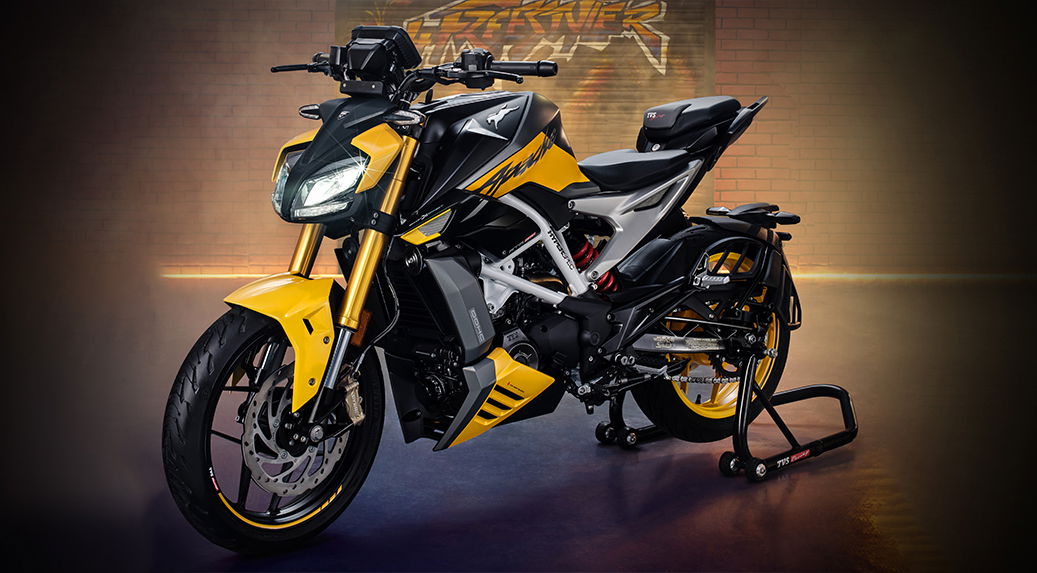Ducati Multistrada V2 S review: do-it-all ADV is worth the strong price
The Multistrada V2 S may look expensive compared to less exotic middleweight adventure bikes, but it justifies the premium

Ducati provides an almost bewildering amount of choice in the Multistrada range, most recently expanded to include the Panigale-engined Multistrada V4 RS. The range of options means you don’t have to spend as much as £32k on one, as is the case for the RS. The V2 S looks like it hits the ‘sweet spot’ in Multistrada land, and it’s less than half the price.
You can read out 2025 Ducati Multistrada V2 S review here.
It should be noted that although the name is fairly new, this is still much the same under the skin as the old Multistrada 950 - the ‘baby’ of the line-up that first arrived in 2017. Ducati has been busy tweaking and fettling over the years, though, so we took one for several weeks and around 600 miles of varied riding in the UK to see if it still cuts it in this cutthroat segment.
Engine, frame, chassis and technology
Powering the V2 models is the same ‘Testastretta’ 90-degree, liquid-cooled V-twin (or ‘L-twin’ as Ducai calls it) as the old 950 model, a unit also found in the Hypermotard, Monster, Desert X and Supersport. It does, though, have lighter connecting rods and a new clutch for 2022. It produces 113bhp at 9,000rpm, and 69lb ft of torque at 6,750rpm.

That engine sits in a steel trellis frame, from which Ducati hangs a 48mm fork and an offset monoshock from Sachs, the damping rates of which are electronically controlled on S models. The dampers are continuously varied based on sensor data, and also which of the bike’s riding modes you’re using.
On that front, there are Sport, Touring, Urban and Enduro modes to be selected, which alter the suspension, traction control and ABS settings. The rider aids work from a six-axis IMU.

As standard, you get a 19-inch front and 17-inch rear cast wheel combination, with each shod in a Pirelli Scorpion Trail II tyre. Wire wheels are available optionally.
Slowing things down, there are twin 320mm discs at the front squeezed by four-pot Brembo calipers, and a single 265mm disc at the rear combined with a two-piston caliper, also from Brembo.
Price, availability and colours
The Ducati brand is known for strong pricing, and the Multistrada certainly doesn’t buck the trend. This may be the baby of the Multistrada range, but the V2 is still not what you’d call cheap.
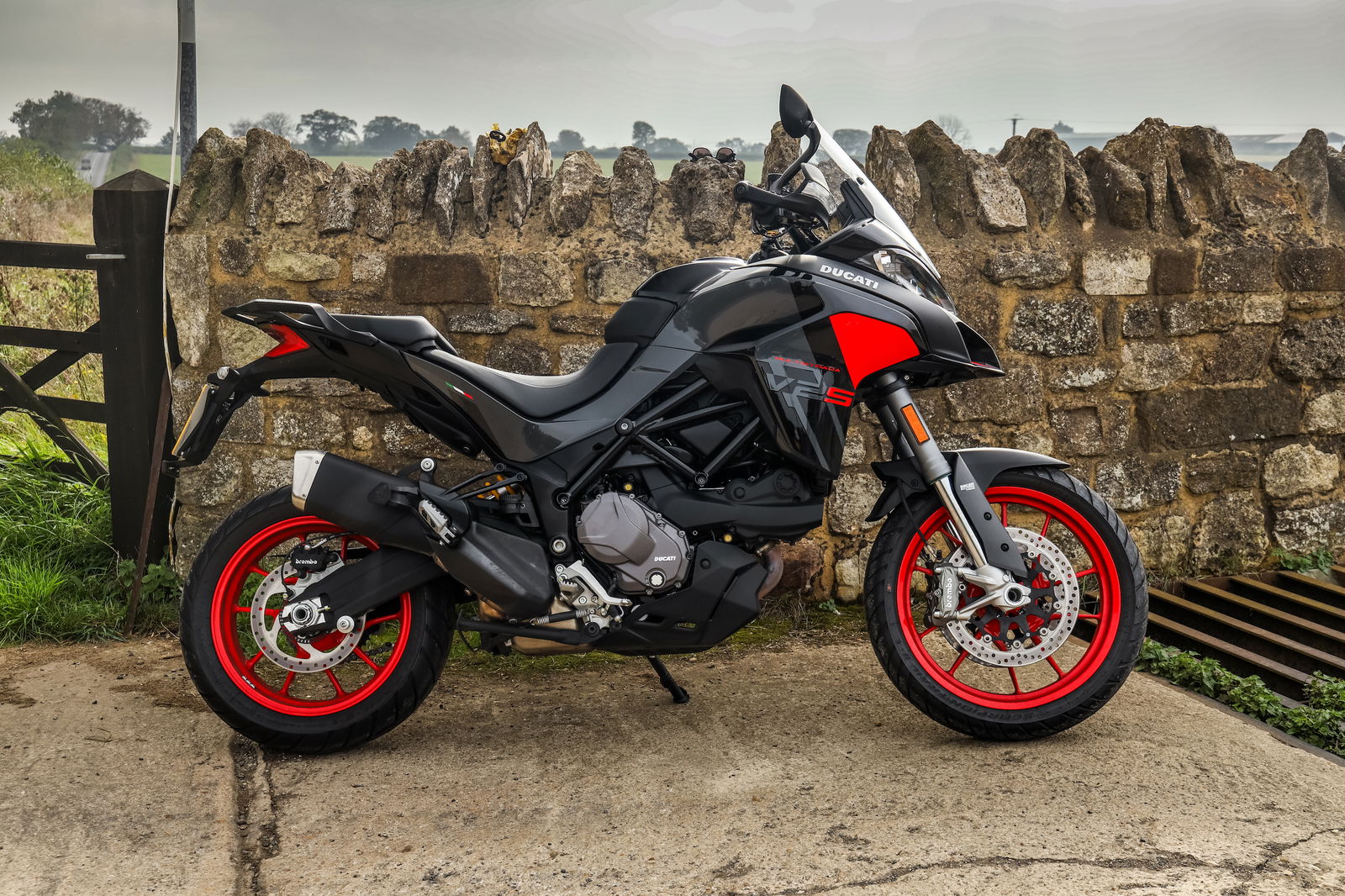
The entry-level version of what was once known as the Multistrada 950 sets you back £13,295, but really, the one you want is the V2 S, which switches the LCD dash for a full-colour TFT while adding an up-and-down quickshifter and semi-active suspension. It costs £15,795, while the V2 S Travel we tested comes out at £16,995, with the premium getting you heated grips, Ducati-branded, body-coloured panniers made by Givi, and a centre stand.
Get carried away on the configurator, and you can easily punt that price beyond £20,000, adding things like a £1,348 'Enduro' crash protection pack, a £1,182 titanium Termigoni end can, and £704.29 carbon fibre covers for the 'air conveyors'.
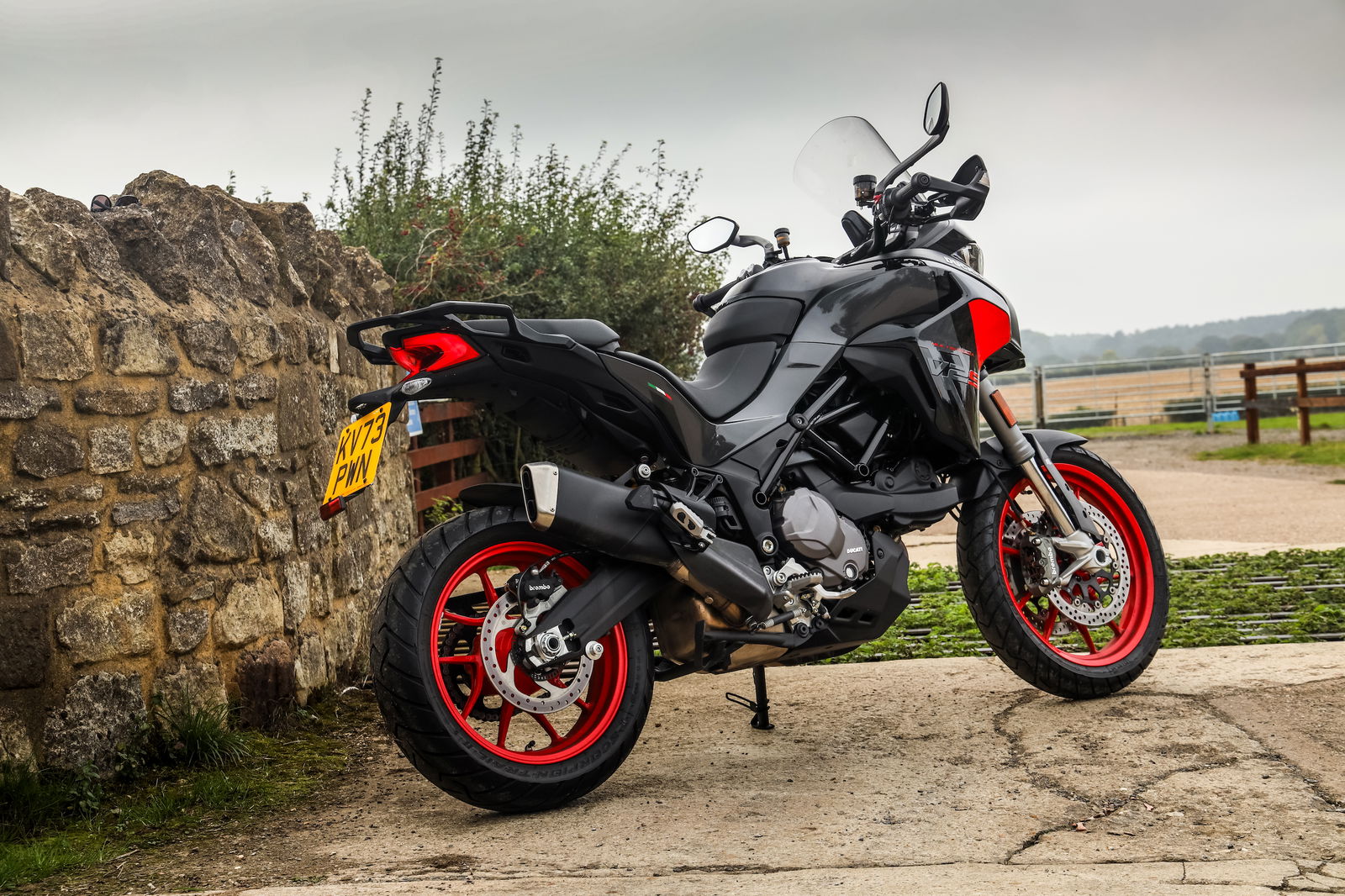
Also, if you want a different colour than the standard shade of red, you’ll have to pay £400 for ‘Thrilling Black’, the only other option available. It makes for a mostly black and grey body with splashes of red and finishes the cast wheels in red, too.
What’s it like to ride?
The Multistrada V2 S is what we’d class as a low-seat adventure bike with its 830mm perch, making it an unintimidating thing to throw a leg over. It feels substantial, though, thanks partly to its 1011mm width, even before you’ve mounted the V2 S Travel’s panniers.
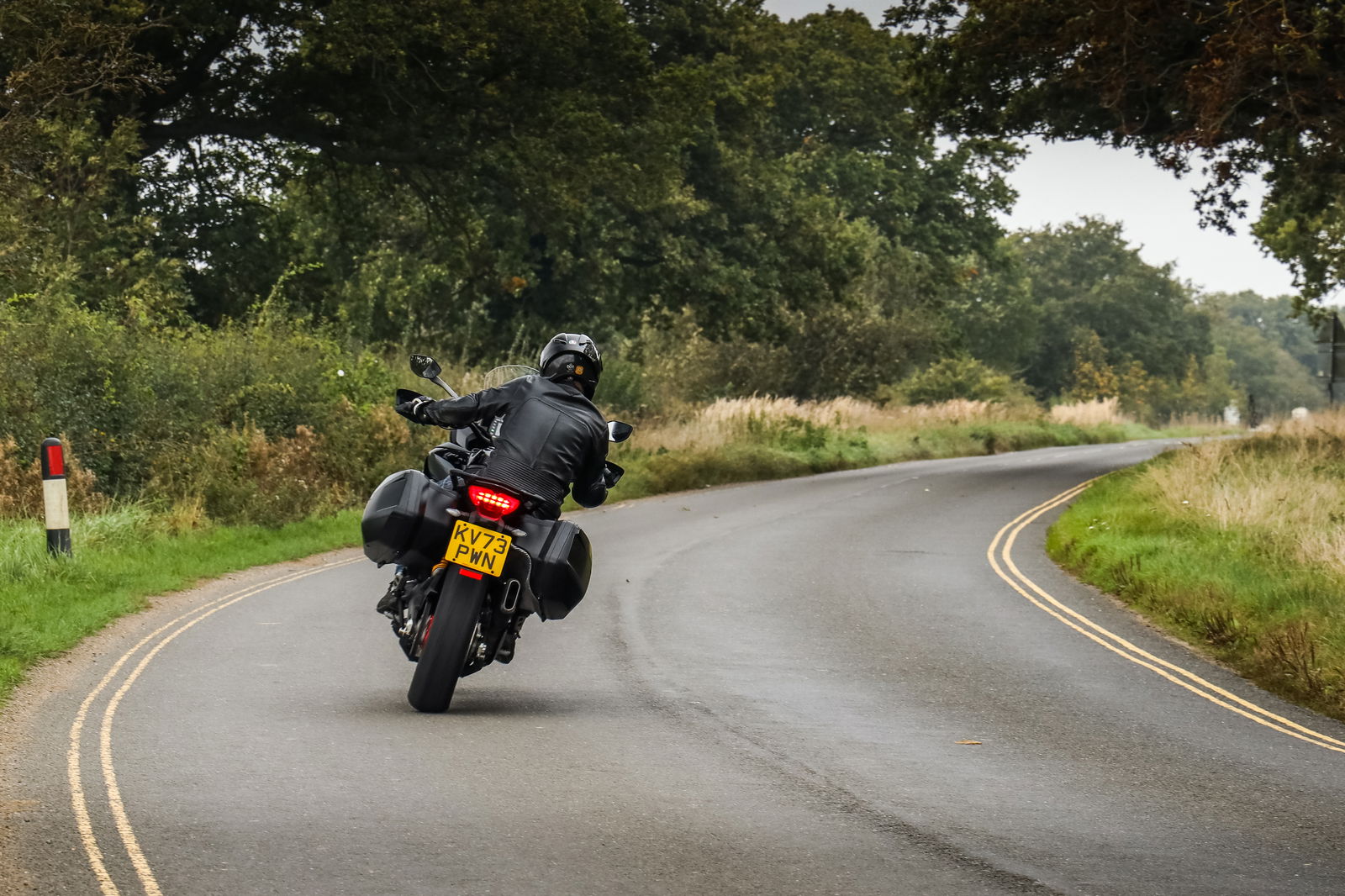
As you’d hope for a bike costing more than £15k, the Multi V2 S feels expensive behind the bars. The build quality leaves us with nothing to grumble about, the material choice and finishing are first-rate, and the five-inch TFT is bright, colourful and feature-packed.
Using a V-twin that’s on the chunkier side, the V2 S can feel a little lumpy when you’re pootling around, passing plenty of vibrations through the seat and the bars. The electronic throttle can at times be a little jerky, although this is mitigated by the softer response of the Touring mode.
Get the engine and road speeds up a bit, and the Testastretta comes into its own. Fat gobs of mid-range torque make it hugely flexible, so you rarely need to rev it out fully, but it’s still worth doing so. In Sport mode - where we tended to leave the bike in dry conditions - the V-twin lets out a fabulous growl that turns to an angry bark as the redline is neared. In these muffled Euro 5 days, it’s definitely among the better noises made by a new bike.
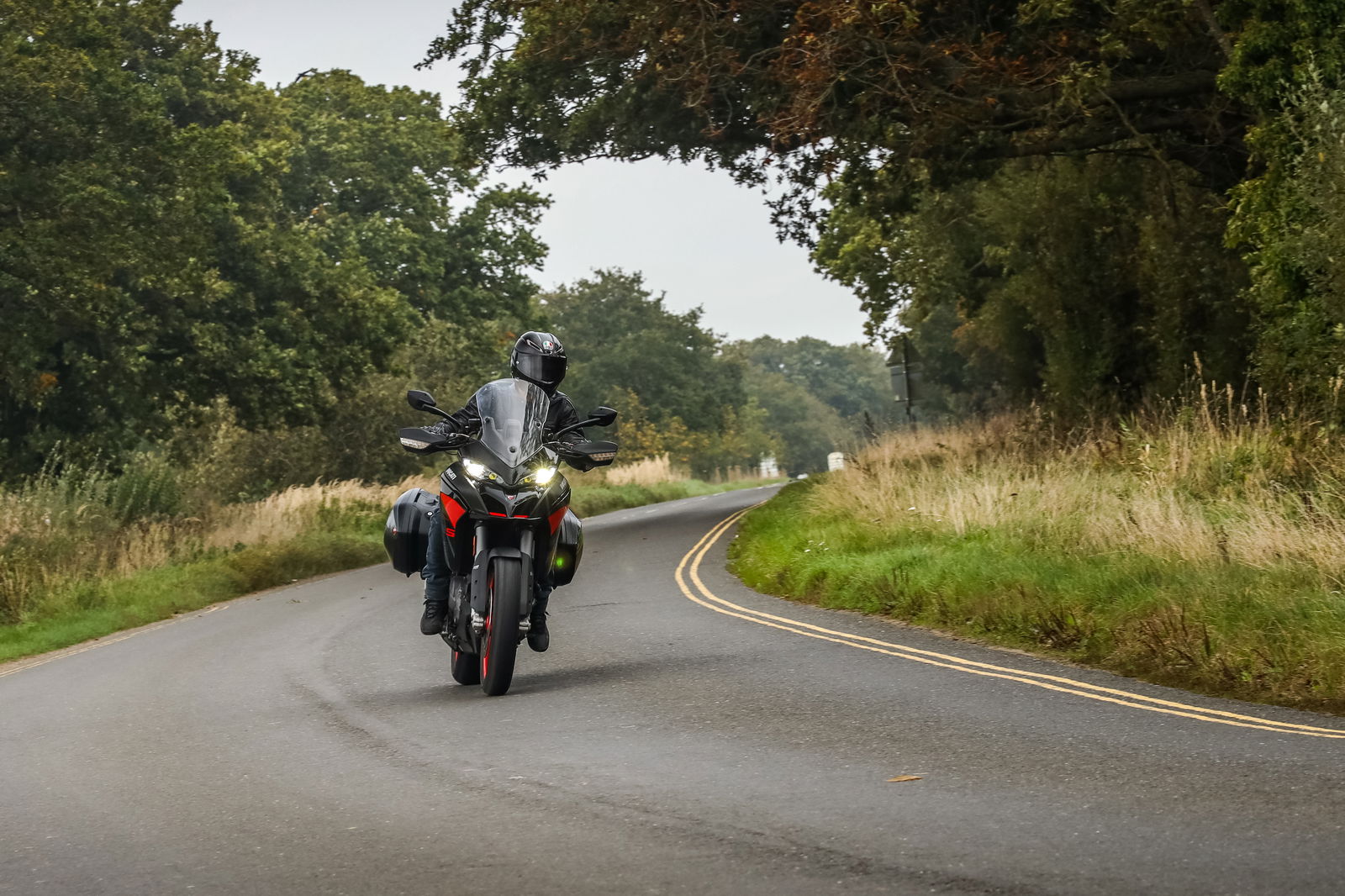
Shifting gears is a joy, too, thanks to a quickshifter that operated faultlessly throughout our time with the bike. It’s smooth, effective and makes last-gasp gearchanges before the redline something that’ll lift your mood even when you’re having a really bad day.
Settling back down to a cruise, you will notice some vibes through the bars, but nothing too uncomfortable. Helping the miles pass with ease is slick and easy-to-use cruise control, but what’s not so good on a longer trip is the wind blast off the top of the screen for taller riders. Then again, that is a common complaint for ADVs.
The screen is, at least, reasonably easy to adjust on the move. I found it better fully lowered, to give a more even blast of air to my shoulders and head. A taller ‘Gran Turismo’ screen is available for £196.19. Meanwhile, a 20-litre tank and the possibility of getting over 50mpg with more gentle riding means you should get over 200 miles of range with each fill-up.

Once you’ve toured to somewhere with nice, twisty roads, you won’t be clamouring for something sportier. The way the V2 S changes direction belies its 225kg wet weight, and although those Pirelli tyres are up for off-road stuff, they offer plenty of grip and confidence on the asphalt.
The star of the show is the Skyhook suspension. It controls dive under braking and squat under acceleration almost spookily well, and irons out rough roads brilliantly. You’ll find yourself wincing at that pothole you didn’t spot in time to avoid, then realising the V2 S can shrug off such things like they’re barely there. Even with everything firmed up in Sport mode, the ride quality is smooth.
All the while, that punchy V-twin is waiting to fire the Multistrada out of corners with enthusiasm and onto the next one.
Should you buy a Ducati Multistrada V2 S?
The Multistrada V2 S sits in a weird place in terms of pricing. It’s cheaper than a full-bore adventure bike, but considerably more than a lot of middleweight options. Compared to something like a Yamaha Tracer 9 GT, it looks expensive.
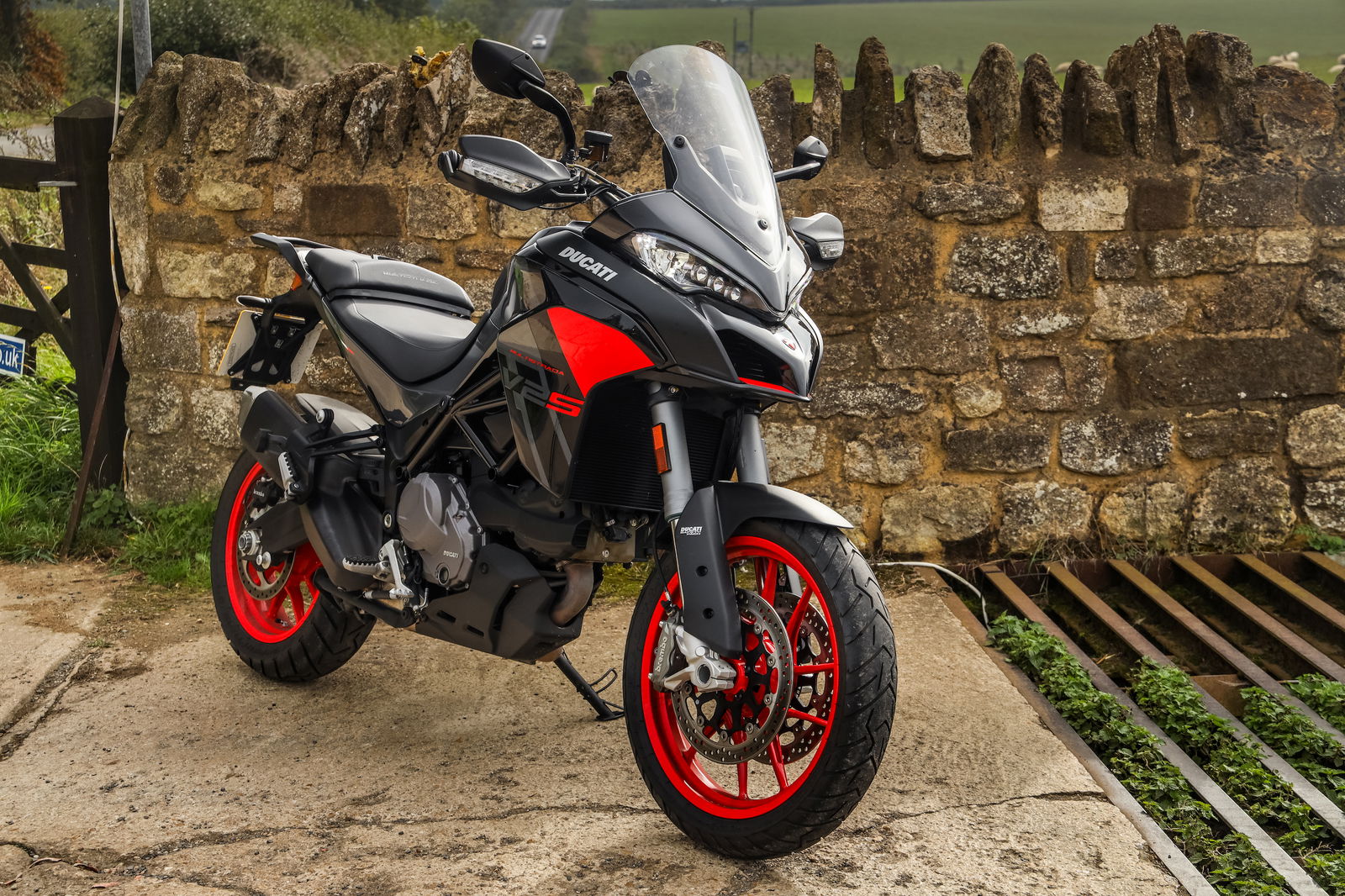
That cost is justified, though, in the way the Multistrada feels and performs. You can see where the extra cash is going, making the higher purchase price much easier to swallow. And compared to the especially expensive Multistrada V4 S (we’ll be putting together a comparison of the V2 S/V4 S soon), the cheaper bike seems decent value. In fact, it’s probably one of the most complete bikes currently on sale.
